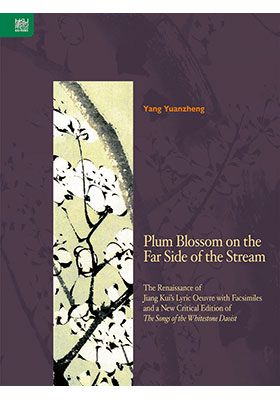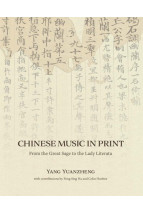Plum Blossom on the Far Side of the Stream
The Renaissance of Jiang Kui’s Lyric Oeuvre with Facsimiles and a New Critical Edition of The Songs of the Whitestone Daoist
(鬲溪梅:論姜夔《白石道人歌曲》在清代的重現)
ISBN : 978-988-8390-82-3
October 2019
428 pages, 9″ x 12″
- HK$780.00
With this book, Yang Yuanzheng has produced what will long be regarded as a ground-breaking milestone in the voluminous scholarship on Jiang Kui (1155–1221). Based in part on his 2011 discovery of a major new source of Jiang’s work, Yang employs close textual reading and editorial interpretation of this text, augmented by meticulous examination of other material, to tease out an important and innovative explanation of why lyric songs enjoyed such a remarkable renaissance in the eighteenth century, a popularity that has continued through the present. Yang attributes the original revival of Jiang’s works to Qing dynasty oppression of the southern Chinese elite and points to an increasing sense of nostalgia as the reason for their enduring popularity.
Plum Blossom on the Far Side of the Stream’s accomplishment is to draw on work from many sub-disciplines—early Chinese song forms and their notation, the literary and political movements of early modern China, codicology, and iconography—and to make fresh contributions to these areas as well. This book reflects a unique breadth of scholarship: in addition to lucid argument regarding the reception of Jiang’s work, important facsimiles of three major manuscripts, five colour plates, and an audio CD are also included.
‘This book will be welcomed by anyone studying the works of poet-musician Jiang Kui, especially that part of his lyric oeuvre for which his own settings with musical notation survive. Specifically musicological study of Jiang Kui has been intense, but in the cross-disciplinary field of historical musico-literary studies, rarely does painstaking critical analysis of material so successfully further illuminate the music. Yang’s conclusions radically change the outlook of the field.’ —Rembrandt Wolpert, University of Arkansas
‘A path-breaking book. Yang brings in not just multiple editions of and comparisons amongst the relevant texts, but also paintings, musical analysis, and historical works showing who was involved in which events. One actually gets a sense of who the major players were—the author succeeds in telling a story rather than just presenting a cut-and-dried technical analysis. The author’s discovery of a major new source is extremely significant.’ —Helen Rees, UCLA


